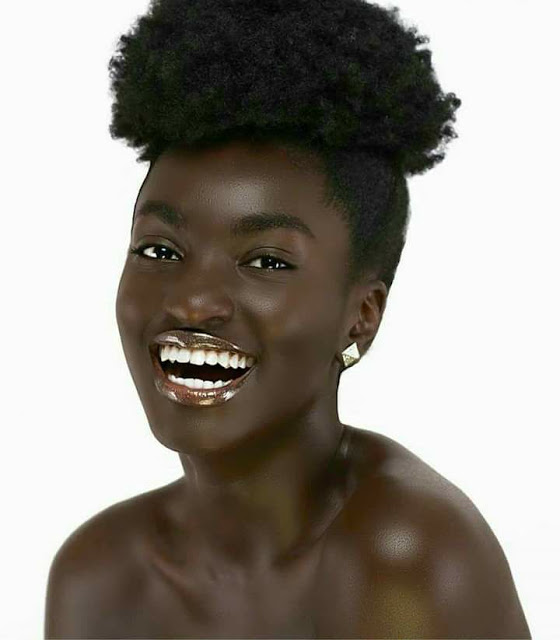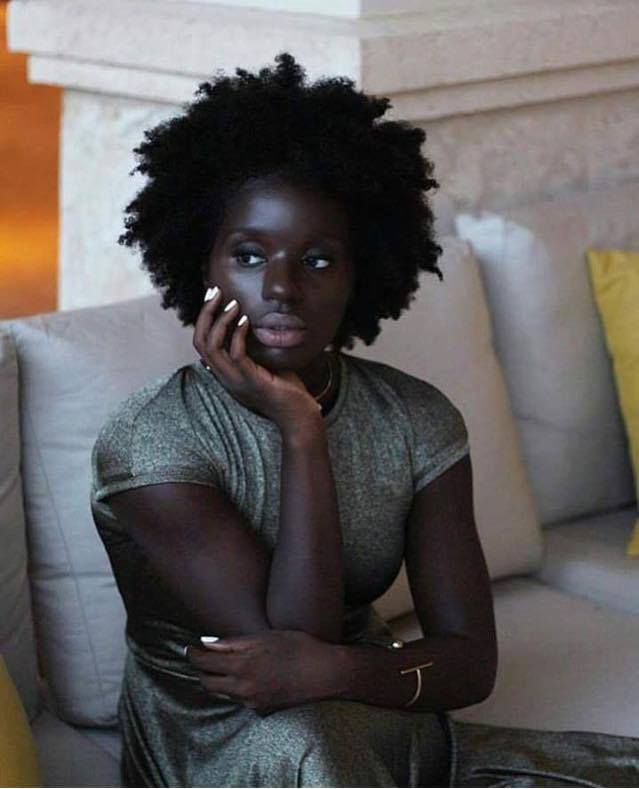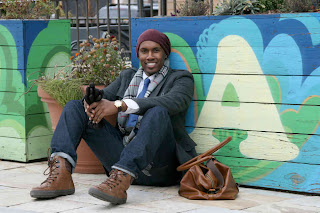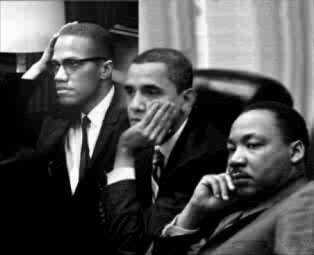Thursday, January 31, 2013
Monday, January 28, 2013
G abourey Sidibe-Our BLACK SKINNED BEAUTY will learn a lot ABOUT Mother AFRICA in her New Role!
January 24, 2013 · No comments
Culture · Tagged: africa, afropop, Culture, gabourey sidibe, Souleo
Actress Gabourey Sidibe Shines Light on Africa with 'AfroPop'
Actress Gabourey Sidibe is ready to take on one of her most important roles to date as host of AfroPoP: The Ultimate Cultural Exchange, a documentary series highlighting contemporary life, art and pop culture in the African Diaspora. The fifth season of AfroPoP, produced by Black Public Media, premiered Tuesday, January 22 on public television's WORLD channel, continuing on Tuesdays weekly through February 5, 2013.
Sidibe, who is best known for her Oscar-nominated performance in the film Precious, decided to accept the role of host as an opportunity to learn more about her roots. "I am part African—I am Senegalese. So I looked at it as a chance to get closer to where I am from," she says.
Furthermore, she is hoping that this season, which focuses on human and women's rights issues, will shatter myths about Africa. The challenge is not new for the Harlem- raised star, since as a young woman she had to combat stereotypes. "Growing up I was the African kid in my school. Every time I went back to Africa people thought I was sleeping in a bush and being chased by lions, but it wasn't that. So I hope people can see themselves in this series and I hope it highlights that everyone struggles and celebrates."
The universal human experience is also the core theme of visual artist Peter Wayne Lewis' exhibition Paintings from the Middle Earth Part IV at Skoto Gallery. Special guests on opening night included legendary painter Ademola Olugebefola and writer of the exhibition's e-catalog, Babacar M'Bow. The series of works presented visually unites themes of science, art and music as the artist's fluid lines draw parallels between these worlds to demonstrate their interconnectedness. "There are creationists who think science is an aberration and not part of the equation," Lewis says. "But it is only a description of the majesty of what you may say your God is, so it is all one in the same thing. Human beings, in our foibles, are trying to describe this gift we are given which is life." The exhibition is on-view until February 23, 2013.
Further exploring themes of life is the exhibition Elements in Red, on view at New World Stages and curated by Bernard Stote. Works by artists such as Harlem Arts Alliance member Leon Nicholas Kalas, Joyce Yamada and Math-You explore this primary color and expand its connotations beyond passion and violence. "When I did the call for art I noticed getting such a diverse application from artists from blood and war to love to landscape," says Stote. "It's amazing how vibrant that color is and how many different themes it can invoke in artists."
While this week offers opportunities to check out all of the aforementioned projects, you'll also want to support upcoming events including actress/comedian Kim Coles' one-woman show, Oh But Wait, There's More and Keith Sweat's appearance at MIST Harlem.
****
The Harlem Arts Alliance is a not for profit arts service organization celebrating 10 years of service to a prestigious list of members such as the Apollo Theater, the Greater Harlem Chamber of Commerce, Columbia University, Harlem Stage (Aaron Davis Hall) and over 850 more cultural/arts institutions and individuals. The weekly column, Harlem Arts Alliance Presents: On the "A" w/Souleo, covers the intersection of the arts, culture and entertainment scene in Harlem and beyond and is written by Souleo, founder and president of event/media content production company, Souleo Enterprises, LLC.

Sent from my BlackBerry wireless device from MTN
Sunday, January 27, 2013
BLACK REPARATIONS- Brother John Cochran WANTED to Fight For it!
Posted by Reunionblackfamily. on October 4, 2012 at 1:00 PM
Not many people know that after the O.J. Simpson case, Johnnie Cochran spent much of his time preparing for a case, collecting historical data, information, and studying cases to sue the U.S. government for Reparations for Africans in America.
"Johnnie Cochran, the famed O.J. Simpson attorney, has said on national television that he is now going to focus on his Reparations For Slavery lawsuit against the United States of America.Johnnie Cochran has assembled a ' Reparations Dream Team' of high powered trial lawyers to help him in this lawsuit, and liberal federal judges have already cost taxpayers in cities like Kansas City, Missouri and Yonkers, New York of billions of dollars to pay for their nonsensical rulings. A liberal federal judge could cost us taxpayers trillions of dollars more if Johnnie Cochran wins his Reparations lawsuit"
"Lawyers planning suit for African-American slave reparations (11/04/00)**
(Associated Press) — "A powerful group of civil rights and class-action lawyers who have won billions of dollars in court is preparing a lawsuit seeking reparations for American blacks descended from slaves.
"The project, called the Reparations Assessment Group, was confirmed by Harvard law professor Charles J. Ogletree and appears to be the most serious effort yet to get American blacks compensated for 244 years of legalized slavery. Lawsuits and legislation dating back to the mid-1800s have gone nowhere.
"We will be seeking more than just monetary compensation,'' Ogletree said. "We want a change in America. We want full recognition and a remedy of how slavery stigmatized, raped, murdered and exploited millions of Africans through no fault of their own.''
"Ogletree said the group, which includes famed attorney Johnnie Cochran, first met in July and will hold its fourth meeting in Washington D.C. later this month. "This country has never dealt with slavery. It is America's nightmare. A political solution would be the most sensible but I don't have a lot of faith that's going to happen. So we need to look aggressively at the legal alternative,'' Ogletree said.
Harvard's ultra-liberal Charles Ogletree indicated that the group's lawsuit will be directed against the federal government, state governments, corporations, and other institutions that allegedly have benefited from slave labor.
"Ogletree said the Reparation Assessment Group includes attorneys [Johnnie] Cochran and Alexander J. Pires Jr., who won a $1 billion settlement for black farmers who claimed discrimination by the U.S. Department of Agriculture; Richard Scruggs, who won the $368.5 billion settlement for states against tobacco companies; Dennis C. Sweet III, who won a $400 million settlement in the "phen-fen'' diet drug case; and Willie E. Gary, who won a $500 million judgment against the Loewen Group Inc., the world's largest funeral home operators.
"Also in the group is Randall Robinson, president of the TransAfrica Forum, a think tank specializing in African, Caribbean and African-American issues. Robinson recently wrote the book "The Debt: What America Owes to Blacks,'' which argues for reparations."
Supporters of the reparations boondoggle cite recent, largely irrelevant, noncomparable cases where groups have been compensated in cash for discrimination by governments. For example, the Reparations Support Group cites the $20,000 award granted by the U.S. to the Japanese-Americans who were interred in concentration camps in the U.S. during World War II. Reparations advocates fail to acknowledge that the Japanese-Americans who received the $20,000 award were direct "still living" victims of the government's discrimination. This is not the case in the proposed "slavery reparations" debacle. Many generations -- and trillions of dollars in welfare payments and minority set-asides and racial preferences in the U.S. -- have already been awarded to "blacks" in this country.
Many citizens and politicians also argue that it isn't fair for taxpayers and corporations who never owned slaves to be burdened with possible multibillion dollar settlements. (AP, via FoxNews, based on the Associated Press story 11/04/00 by Paul Shepherd.
Sent from my BlackBerry wireless device from MTN
Tuesday, January 22, 2013
BLACK PYRAMIDS IN NUBIA
among-Sudan%E2%80%99s-Nubian-pyramids.aspx
A walk among Sudan's Nubian pyramids
Does Sudan have more pyramigypt? In this series, we explore the splendours of the ancient Kingdom of Kush and the legacy it left behind in the land of the Black Pharaohs
Mohammed Elrazzaz, Monday 21 Jan 2013


Send
Tweet


Views:1011
The Island of Meroe
Following the Nile as it flows north, some 200 kilometres from Khartoum, one comes close to the last capital of the Kushite Kingdom, one of ancient Africa's most prominent cultures. The site, known as the Island of Meroe, is no island at all, but rather an expanse of land that stretches between the Nile and the Atbara River. One of two UNESCO World Heritage Sites in Sudan, the archaeological sites of Meroe includes Meroe itself, Naga and Musawwarat es-Sufra.
Visitors to these isolated sites will find pyramids, temples, relics of residential buildings and irrigation infrastructure dating from as far back in time as the eighth century BC.
The Kingdom of Kush, which was heavily influenced by Ancient Egyptian culture, built its own pyramids, over two hundred of them. Whether at Meroe, El-Kurru or Nuri, the unique architecture of these pyramids is self-evident.
Unlike their Egyptian counterparts, the Nubian pyramids are much smaller in size (a base no broader than eight metres), very steep (an angle of seventy degrees) and rather elongated (no higher than thirty metres). Before delving into more details, we start with the first site.
Naga, at the Hall of Natakamani
A monumental pylon looms at a distance. As we came closer, we could decipher the bas-reliefs: the King Natakamani and his wife and co-regent Queen Amanitore appear grasping their enemies by the hair and beating them triumphantly.
This first-century temple is dedicated to a local god: Apedemak, the Kushite lion-headed warrior deity. On the sidewalls, Natakamani is accompanied by Apedemak, Horus, and the ram-headed Amun, while a curious image of Apedemak as a lion-headed snake emerging from a lotus flower never fails to grasp attention.
Back to the pylon, one can easily understand why many visitors like to think of this temple (and other Sudanese ones) as Pharaonic, while, in reality, they are only of Pharaonic inspiration.
These monuments are all Kushite, and a closer look would reveal artistic features typical of their culture: the Queen has clear African features, and the same goes to the broad-shouldered King with his round head and his necklace of large beads. Moreover, the Queen is depicted as the same size as the King, something symbolic of an equally important role.
A stone's throw from the temple is an interesting kiosk with a hybrid style that fuses Egyptian, Greek and Roman elements. No interpretation whatsoever is offered. Not far from here is yet another temple, a big temple dedicated to Amun, also commissioned by the King Natakamani.
In addition to the hypostyle plan and the colonnades, the Temple of Amun has its own avenue of rams, reminiscent of the one in Karnak, Luxor.
Musawwarat es-Sufra
The Great Enclosure, dating from the Napatan Period, is the name given to an architectural ensemble comprising three temples, all with courtyards, chapels and ramps. Why ramps? The answer comes from a funny-looking statue of an elephant.
Other reliefs of elephants here and in the nearby Lion Temple led many Egyptologists to conclude that the Great Enclosure served –among other things- as a place for training elephants for battles.
As for the Lion Temple, it is a compact and elegant structure dedicated to Apedemak by the King Arnekhamani. Dating from the third century BC, it is one of the earliest Merotic monuments, and its interior presents a fantasy world of elephants, lions, sphinxes and griffon-like creatures depicted on the walls and the columns. The temple in its current state is a reconstruction dating from 1969.
Pyramids
"Clearly visible from the Khartoum-Atbara highway, the pyramids of the Royal Cemetery of Meroe stand alone on a sandy ridge like a row of broken teeth," Paul Clammer, the Bradt Travel Guide – Sudan.
These teeth were broken (or better said, these pyramids were decapitated) by Western explorers and treasure-hunters in search for gold. Giuseppe Ferlini is probably the one name responsible for most of the damage.
Someone once said that the pyramids were archeologically significant but visually unimpressive. As we approached the Royal Pyramids of the Northern Cemetery (one of three pyramid fields of Meroe), we quickly came to realise that that was wrong.
The landscape in this pyramid field, dominated by the perfect harmony of the massive yellow sand dunes and the reddish hue of over thirty pyramids, is made even more serene by the absolute absence of tourists and touts tying to sell you a papyrus roll or a camel ride.
The site has a melancholic feel, and the clustering of so many pyramids in such compact a space only adds to the magic. The pyramids here have funerary chapels attached to their eastern side, something that cannot be seen in Egypt. Some thirty kings, eight queens and numerous princes were buried here, with the oldest burials dating to the third century BC, and continuing all the way to the fourth century AD.
Several construction styles are visible, and can be classified into types: stepped stone courses, smooth surfaces, moulded corners, hybrids; the examples are many. As we silently roamed between these pyramids, we came to wonder about the fate of Meroe, which came to an end with the rise of Axum in Ethiopia and the vandalism of the Bedouins, among other factors.
My travel companion and friend Ahmed Yehia, who has a graduate degree in cultural management, summed it up nicely: "Meroe is a place where you not only see the history in front of you…you also feel it. I couldn't have believed that such a place existed with all these pyramids around you…I'm sure people in Egypt don't know about this amount of pyramids in our sister country Sudan."
Our words were swallowed by the looming silence. A slight breeze carried the sand westwards, towards the direction of our next destination: Jebel Barkal and the land of the Black Pharaohs.
Sent from my BlackBerry wireless device from MTN
Friday, January 18, 2013
NIGERIA! - AGAIN THE BEST IN THE WORLD!-THIS YORUBA-USA SCHOOLING NIGERIAN GIRL IS THE BEST IN THE WORLD!
The world’s best
 •Ms Aderinoye
•Ms Aderinoye Discover How You Can Easily Start A Mini-Importation Business in Nigeria – Without Capital. New Laptops, Blackberries, etc.
Related posts
Maturity is knowing when and where to be immature.
Warm regards
Yeye Akilimali Funua Olade
1/18/2013 9:07:23 AM
Thursday, January 17, 2013
If you choose not to live in a cluster, uh, dorm... -- Jim Zelenka
Warm regards
Yeye Akilimali Funua Olade
1/17/2013 5:05:24 PM
Saturday, January 05, 2013
BLACK MEN SUPREME! -Fashion KINGS of the Universe!
by NPR Staff
December 31, 201211:48 AM
http://www.npr.org/2012/12/31/167720258/why-black-men-tend-to-be-fashion-kings
Listen to the Story
Tell Me More
9 min 15 sec

Amy Ta/NPR
1 of 10
View slideshow
i
For many, style is much deeper than articles of clothing; it's a statement of identity. Black men have a unique relationship with fashion, one that can be traced all the way back to the 17th and 18th centuries.
Monica L. Miller, the author of Slaves to Fashion: Black Dandyism and the Styling of Black Diasporic Identity, spoke with Tell Me More's Michel Martin about the past, present and future of black men's fashion.
Miller, an associate professor of English at Barnard College, explains that African-American men have used style as a way to challenge stereotypes about who they are. "Sometimes the well-dressed black man coming down the street is asking you to look and think."
Victor Holliday, associate producer of on-air fundraising at NPR and one of the resident kings of style, tells Martin that he learned about the importance of fashion at an early age. "When I was 5 years old, I knew exactly how I was going to look," he says. "And that was the year I got my first trench coat and my top hat."
Holliday's style icon is his father, who taught him that the main object of dressing up is winning respect. "Because as you present yourself seriously, people tend to take you seriously."
Holliday is one of the men featured in Tell Me More's Kings of Style slideshow.
Sent from my BlackBerry wireless device from MTN
BLACK MEN SUPREME! -Fashion KINGS of the Universe!
by NPR Staff
December 31, 201211:48 AM
http://www.npr.org/2012/12/31/167720258/why-black-men-tend-to-be-fashion-kings
Listen to the Story
Tell Me More
9 min 15 sec

Amy Ta/NPR
1 of 10
View slideshow
i
For many, style is much deeper than articles of clothing; it's a statement of identity. Black men have a unique relationship with fashion, one that can be traced all the way back to the 17th and 18th centuries.
Monica L. Miller, the author of Slaves to Fashion: Black Dandyism and the Styling of Black Diasporic Identity, spoke with Tell Me More's Michel Martin about the past, present and future of black men's fashion.
Miller, an associate professor of English at Barnard College, explains that African-American men have used style as a way to challenge stereotypes about who they are. "Sometimes the well-dressed black man coming down the street is asking you to look and think."
Victor Holliday, associate producer of on-air fundraising at NPR and one of the resident kings of style, tells Martin that he learned about the importance of fashion at an early age. "When I was 5 years old, I knew exactly how I was going to look," he says. "And that was the year I got my first trench coat and my top hat."
Holliday's style icon is his father, who taught him that the main object of dressing up is winning respect. "Because as you present yourself seriously, people tend to take you seriously."
Holliday is one of the men featured in Tell Me More's Kings of Style slideshow.
Sent from my BlackBerry wireless device from MTN
OBAMA! -OUR BLACK PRESIDENT HAS MADE HISTORY with his popular Vote TOTALS!
The 2012 presidential election has obviously come and gone, but before we move on entirely, there's a little tidbit of statistical trivia that struck me as interesting -- and chart worthy.
Bloomberg reports today that, thanks to some provisional ballots that have now been counted in New York City, President Obama's popular-vote total is up to 51.06%. That wouldn't be especially interesting, were it not for the fact that Obama is the first presidential candidate since Dwight Eisenhower to top 51% twice.

In fact, in American history, this is a feat that's only been pulled off by six presidents: Andrew Jackson, Ulysses S. Grant, William McKinley, Franklin D. Roosevelt, Eisenhower, and now, Barack Obama.
In case you're wondering if Reagan made the cut, he came close, but ended up with 50.7% in 1980. Plenty of other candidates might have had a better shot at this, were it not for third-party candidates.
Also, though Obama's popular-vote win on election night seemed quite narrow, it's now grown to about four percentage points (and roughly 5 million votes), which is a pretty comfortable margin of victory.
We can debate the utility and value of electoral "mandates," but if they mean anything, Obama has earned enough public backing to have Congress take his agenda seriously.
Sent from my BlackBerry wireless device from MTN
Friday, January 04, 2013
Our BLack Skinned Beauty Gabourey Will Host AFRO-POP!
Jan 03 | by _YBF

Actress Gabourey Sidibe has landed a new gig as the host of Public Television's "AfroPoP". Get the details on her new job inside and read Fantasia's latest rant about people who judge her....
On January 22, Yelling to the Sky actress Gabourey Sidibe will make her debut as the host of Public Television's AfroPoP: The Ultimate Cultural Exchange, an innovative documentary series highlighting contemporary life, art and pop culture in the African Diaspora.
Produced by Black Public Media, the show will premiere on the WORLD Channel at 7:00pm ET on Tuesday, January 22 and continue on Tuesdays weekly through February 5, 2013.
Gabourey spoke about "AfroPoP", which uses independent films to bring awareness to human and women's rights struggles saying,
"This season of AfroPoP helps give voice to those who truly need to be heard. I'm happy to help bring these stories to the American public and raise awareness of issues of vital concern to women and men in Africa as well as all who care about human rights."
And since she's a star product of indie films like Precious, this new role suits her.
Leslie Fields-Cruz, Black Public Media Vice President and Director of Programming, explained Gabby's hiring saying,
"Gabourey's energetic spirit and connection to the youth culture made her the perfect choice to host the series this season and we are happy to have her as such an integral part of AfroPoP."
Sent from my BlackBerry wireless device from MTN















































